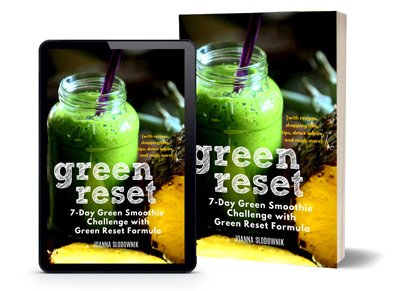Cabbage is often unappreciated, but it’s worth to make an effort to consume more of it, because of all the health benefits that it provides. Cabbage can be used in many cooking recipes, but it’s worth to consume lots of it raw for maximum benefits.
For most people, the appeal of cabbage juice lies not in its taste, which is rather bitter, but in the many health benefits you can derive from drinking it. A member of the healthy cruciferous family of vegetables that also includes broccoli and cauliflower, cabbage contains a wealth of micronutrients as well as a wide array of phytochemicals with a similarly broad variety of medicinal properties.
Salads and juicing are two popular ways to eat raw cabbage, as well as sauerkraut (cultured cabbage), but I have found that it can also be used in smoothies, as adding a small amount of cabbage to green smoothie will hardly be noticeable in many recipes.
Cabbage has been shown to reduce the risk of some cancers, especially those in the colorectal group. Cabbage provides fiber, vitamins A, C, K and B6, folate, potassium, manganese, thiamin, calcium, iron and magnesium.
Purple cabbage also contains anthocyanins, which in other vegetables have been proven to have anti-carcinogenic properties. Along with other cole crops, cabbage is a source of indole-3-carbinol, a chemical that boosts DNA repair in cells and appears to block the growth of cancer cells. Research suggests that boiling these vegetables reduces their anti-carcinogenic properties.
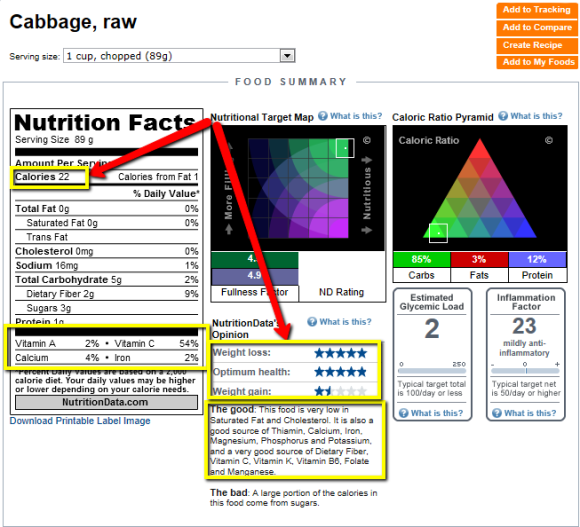
Just looking at the Nutrition Facts from Nutritiondata.com will tell you that it’s very beneficial for weight loss and optimal health. No wonder, almost 90 grams of cabbage has only about 20 calories. And the glycemic load is almost negligible – very important for people with blood sugar issues.
The good news about cabbage, and other calciferous veggies, is that you can eat all the cabbage you want, practically stuffing yourself, and you still will not gain weight.
Select cabbage that is heavy for its size with leaves that are unblemished and have a bright, fresh look are signs of desirable quality. Whole cabbages are preferred whenever possible as pre-cut or preshredded cabbage has a greatly diminished vitamin content. Peak season for most cabbages runs from November through April.
Fresh whole cabbage will keep in the refrigerator for one to six weeks depending on type and variety. Hard green, white or red cabbages will keep the longest while the looser Savoy and Chinese varieties need to be consumed more quickly. It is necessary to keep the outer leaves intact without washing when storing since moisture hastens decay.

Green Cabbage Smoothie Ingredients
Time to make some green smoothies with cabbage!
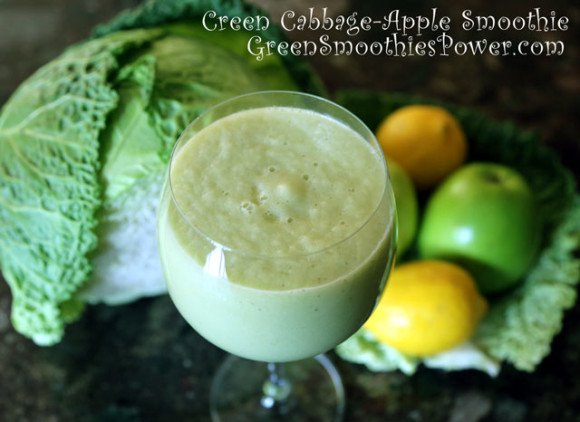
green-cabbage-smoothie9b
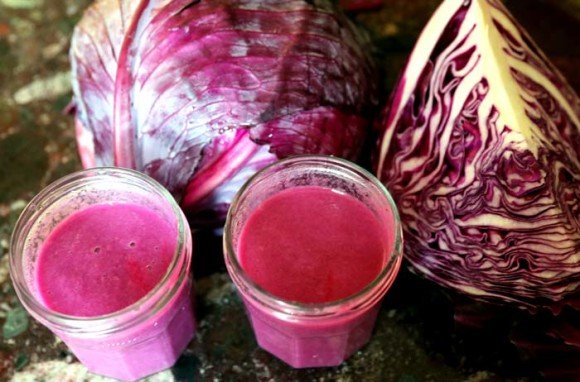
Red cabbage smoothie
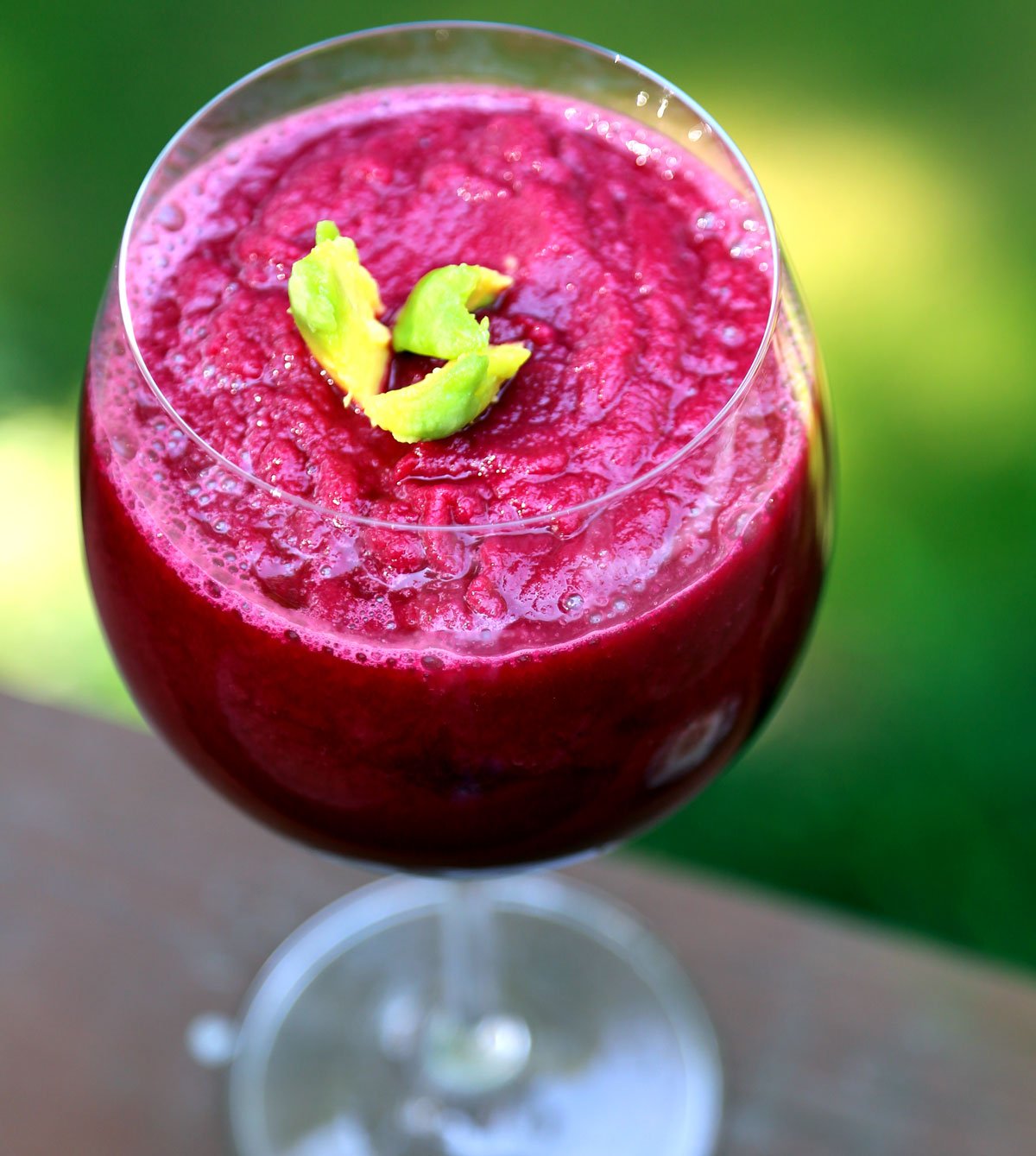
Beet cabbage smoothie
Submit Your Smoothie Recipe!
When you find a taste you love, why not submit your favorite smoothie recipe in the comment section below!
Find more smoothie recipes and tips on my blog.

